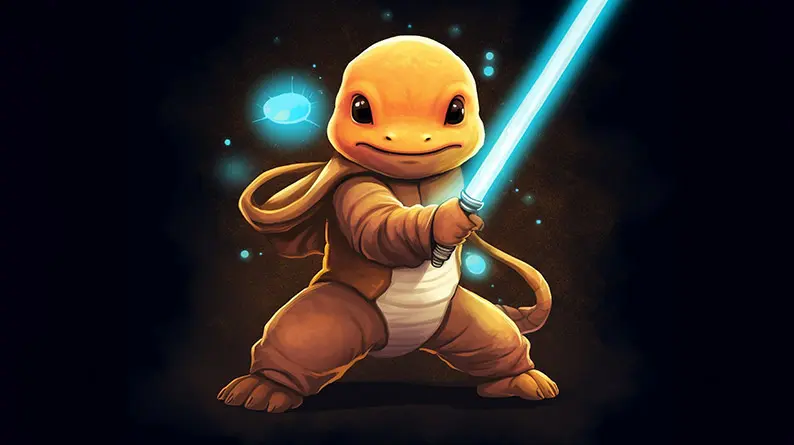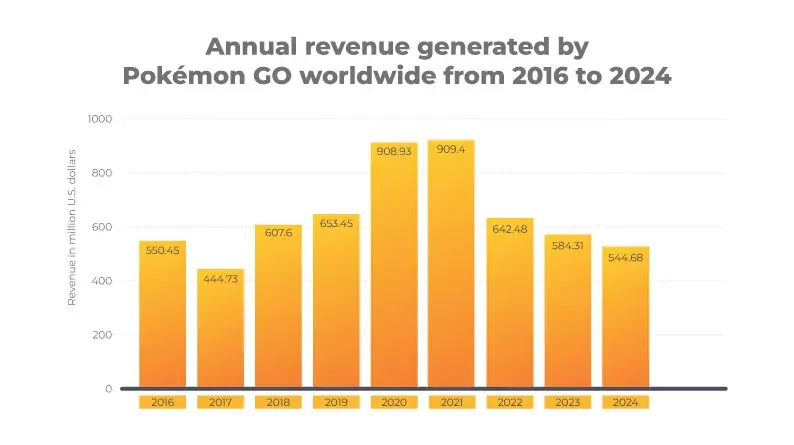Pokémon GO has reformed how one percieves mobile gaming, with its ability to generate multiple sources of revenue. From AR novelty to a multibillion-dollar empire, Pokémon GO introduced a system that generates enormous revenue through a clever monetization model that mixes user fun with corporate prospects.
Pokémon Go, developed by Niantic, has a captivating history that stretches around a decade. Announced in September 2015 as a collaboration between Niantic, Nintendo, and The Pokémon Company, its concept was inspired by an earlier project called Ingress, also an augmented reality (AR) and geolocation technology game. Pokémon Go underwent a closed beta phase starting in March 2016 in Japan, followed by Australia, New Zealand, and the U.S. during subsequent months, where gameplay mechanics like Stardust and Candy were refined before its official launch.
Pokémon Go was officially launched on July 6, 2016, and quickly became a global phenomenon. It was praised for its innovative use of AR and geolocation that boosted players to explore the real world to catch Pokémon. Within weeks of its launch, the game became one of the most downloaded apps globally, significantly boosting Nintendo’s market value.
The game kept evolving continuously, introducing features like raid battles and legendary Pokémon (2017), trading and PvP battles (2018), and remote raid passes during the COVID-19 pandemic (2020). Seasonal events like Community Days and franchise collaborations managed to keep the experience fresh. At the same time, its cultural impact changed the face of mobile gaming by combining AR with social interaction, encouraging outdoor activity, bringing communities together, and influencing local businesses through sponsored locations.

Pokémon Go uses a diverse revenue model depending on its freemium structure, making the most of in-app purchases, sponsorships, advertising, and event-based monetization. Here’s a detailed breakdown:

This multi-tiered monetization approach has proven exceptionally sustainable, allowing Pokémon GO to maintain profitability years after its initial trending success. The model is particularly cogent because monetization is smoothly integrated with gameplay enhancements, creating value for players rather than barriers to enjoyment.
The complexity, features, and ultimate product quality all affect how much it costs to build a game like Pokémon Go. A thorough summary of the anticipated expenses is provided below:
Here’s an approximate breakdown of development costs for a Pokémon Go-like game:
| Development Component | Estimated Cost |
| Client Application and Game Design | $60,000–$100,000 |
| UI/UX Design | $6,500 |
| Backend Development | $80,000 |
| Server Infrastructure | $150,000 |
| Game Models and Animations | $100,000 |
| Sound Effects | $15,000–$20,000 |
| Quality Assurance (QA) and Testing | $50,000 |
| Management Costs | $20,000 |
| Total | $481,500–$526,500 |
Several factors can influence the total cost:
Developing a game like Pokémon Go typically takes 2–5 months for simpler versions and up to a year or more for advanced versions with high-quality AR and geolocation integration.
From concept to launch, Juego Studios has you covered with game development services. We focus on developing AR games akin to Pokémon GO. Our competencies in Unity 3D, AR frameworks and geolocation services enable us to provide tailored solutions for your requirements at budget friendly rates while ensuring a stunning augmented reality experience that can rival the highly competitive gaming market today.
The multi-tiered revenue system of Pokémon GO is unlike any other, since it allows monetizing while enjoying free gameplay. With the use of in-game purchases, geo-context advertising, special functions, merchandise, and data collection, Niantic has established a profitable business that keeps earning billions.
Monetization is cleverly disguised in the gameplay which makes in-app purchases far more effective. There are countless ways for consumers to improve their experience without feeling compelled to spend money. Together, these features plus regular updates helped keep the engagement and revenue of Pokémon GO sustained way beyond the initial excitement.
Pokémon GO is a perfect example for businesses interested in the AR gaming industry, as it teaches how too monetize without compromising player experience, creating an overall sustainable revenue system.
Pokémon GO has generated over $8 billion in lifetime revenue since its launch in 2016. This revenue primarily comes from in-app purchases, with players spending on items like Poké Balls, Raid Passes, and Incense. In 2024 alone, the game earned $544 million, showcasing its continued popularity even years after its release. The United States is the largest contributor to this total, accounting for 38% of lifetime earnings, followed by Japan at 31%
Industry estimates suggest that 5-10% of Pokémon GO players make in-app purchases. This relatively small percentage, often referred to as “whales,” contributes disproportionately to the game’s revenue. For example, surveys have shown that while many players spend modest amounts, a significant number spend upwards of $15 or more, and a smaller group spends over $75. This freemium model capitalizes on a dedicated subset of paying users while keeping the game free for the majority
Small businesses can participate in Pokémon GO’s Sponsored Locations program by paying $30/month for a standard PokéStop or $60/month for a premium Gym location. These sponsorships help attract foot traffic and engage local communities. Larger corporate partnerships are negotiated separately and often involve custom agreements tailored to their marketing goals. For instance, brands like McDonald’s and Starbucks have used this feature to drive customer engagement
The original development of Pokémon GO is estimated to have cost between $5-10 million, leveraging Niantic’s existing AR technology from its earlier game, Ingress. However, this figure excludes ongoing maintenance, server costs, and updates, which add significantly to long-term expenses. The use of proprietary geolocation and AR systems contributed to the initial high costs compared to simpler mobile games
The timeline for developing a Pokémon GO clone depends on its complexity:
Additional time (2-3 months) is needed for quality assurance (QA), testing, and optimization to ensure smooth performance
In-app purchases are Pokémon GO’s most profitable revenue stream, accounting for approximately 70-80% of total earnings. Players frequently buy items like Poké Balls and Raid Passes to enhance their gameplay experience. Sponsored locations and ticketed events contribute the remaining revenue but are secondary compared to the consistent income generated from in-app purchases
Pokémon GO’s revenue model stands out due to its innovative combination of:
This unique approach fosters both virtual engagement and real-world interaction, differentiating it from traditional mobile games that rely solely on in-app purchases or ads